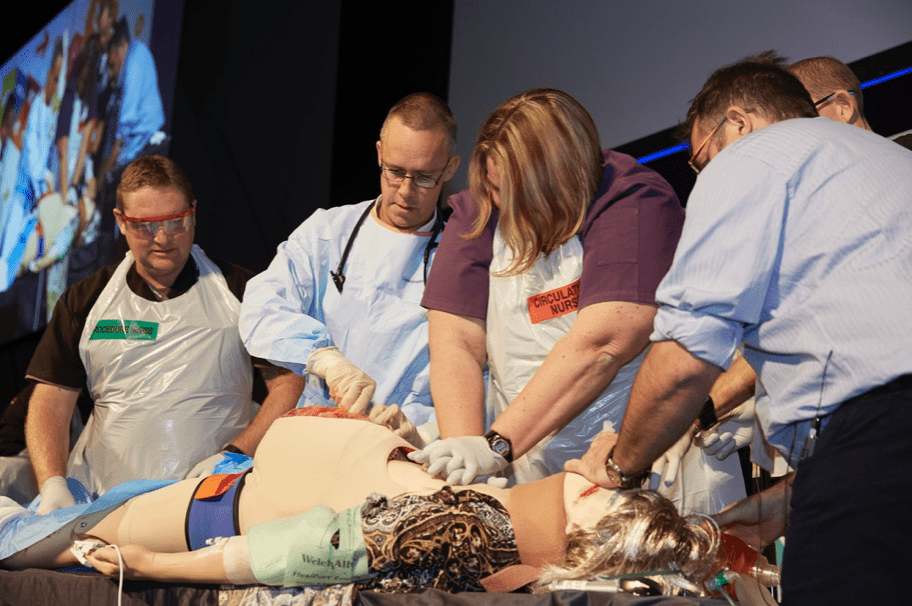Getting CPR right is important. We talk about rate and depth and recoil and duty cycle. All those things need to be right to achieve even low flow. Remember that even with the best CPR we may only achieve about 50% of normal cardiac output.
Delaying CPR, taking inappropriate breaks and poor technique affect the flow state. Would it just be better to perform continuous CPR? If interrupting CPR is bad, then uninterrupted CPR must be good.
In 2015 Nichol G et all(NEJM 2015 Dec3;373(23):2203-14), published the results of a trial that showed that continuous CPR was no better than 30:2, in terms of survival and more importantly, neurologically intact survival.
The article reviewed here looked at the adherence to correct technique.
Schmicker R et al. CPR compression strategy 30:2 is difficult to adhere to, but has better survival than continuous chest compression when done correctly. Resuscitation Vol 165, p31-37, August 1, 2021
This is one of those papers where the title sums it all up.
What they did
This study looked at adherence to two chest compression strategies:
- Continuous chest compressions
- 30:2
An algorithm was developed that looked at how well operators adhered to each strategy and it was tested:
n= 26,810
30:2 had 10,942 patients assigned
Continuous compressions had 15,868 patients assigned.
The intended strategy was only adhered to 54.4% of the time. When it was adhered to the 30:2 option resulted in greater survival with OR 1.05 vs 0.72. However the 30:2 strategy was less often adhered to.
What does this mean?
It is important to remember that CPR is not easy. We know that the depth of compression decreases at or just before two minutes, although the operator is unaware of this. We know that there are interruptions to CPR and we often get the rate wrong. Playing ‘Staying Alive’ by the Bee Gees during a resuscitation is just not practical. Funky, but not practical.
The team leader needs to ensure that CPR is not interrupted and is done properly. However the Team Leader can’t keep their eyes on everything. I am pushing for a CPR Spotter. We have spotters to put on PPE, why would we have someone whose main job was to ensure that:
- the correct rate of CPR was maintained
- the correct depth of CPR was maintained
- the duty cycle was adhered to ie., the amount of recoil was appropriate
- there was minimal interruption to CPR
Getting it right is paramount. Apart from ECMO, it really is about CPR at the moment.











Kitchens have them, spotters. Walking around dipping finger in and adding things like more salt or keep stirring etc. CPR spotters are a good idea, involving the person that takes over compressions (in what is being observed) is also helpful, especially for onward teaching.